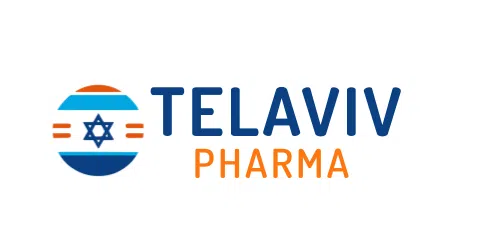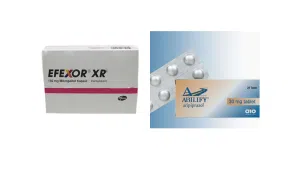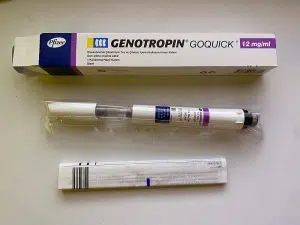
Xarelto vs. Eliquis: Pros and Cons
Last Updated on February 10, 2025
When it comes to anticoagulant medications, Xarelto and Eliquis are among the most commonly prescribed options. Both of these medications serve to reduce the risk of blood clots and associated complications; however, their mechanisms, dosing, and side effects may differ significantly. Understanding the pros and cons of each medication can help in making informed decisions regarding treatment options.
In the battle of Xarelto vs. Eliquis, both drugs present unique advantages and potential drawbacks. Patients need to consider factors such as *dosage*, *administration*, and *cost* when determining which medication is appropriate for their particular health situation. It is essential to work closely with healthcare providers to assess personal health conditions and preferences in order to choose the best anticoagulant option.
Comparison of Xarelto and Eliquis ::
| Feature | Xarelto | Eliquis |
|---|---|---|
| Dosing Frequency | Once daily | Twice daily |
| Food Interaction | Can take without food | Best taken with food |
| Reversal Agent | Andexanet alfa | Andexanet alfa |
| Cost | Generally less expensive | Higher cost |
To better understand the two medications, we delve into the specifics of each. The following sections will provide an overview of Xarelto’s characteristics and benefits, followed by a look at Eliquis and its unique features. Armed with this knowledge, patients can make more educated choices regarding their anticoagulant therapy.
Overview of Xarelto
Contents
Xarelto (rivaroxaban) is a direct oral anticoagulant (DOAC) that functions by inhibiting factor Xa, an essential component in the blood coagulation process. It is typically prescribed for various conditions, such as atrial fibrillation (AF), deep vein thrombosis (DVT), and pulmonary embolism (PE). One significant advantage of Xarelto is its ease of use, given the once-daily dosing regimen, making it suitable for patients who prefer a more straightforward medication schedule.
Overview of Eliquis
Eliquis (apixaban) is also a direct oral anticoagulant that acts specifically by inhibiting factor Xa, similar to Xarelto. Commonly used in the prevention and treatment of DVT and PE, as well as for individuals with AF, Eliquis is often chosen for its lower likelihood of bleeding events compared to other anticoagulants. It must be taken twice daily, making adherence essential for effective treatment outcomes.
Key Differences
- Dosing: Xarelto is once daily; Eliquis is twice daily.
- Food requirement: Xarelto can be taken without food, while Eliquis is best with food.
- Reversal agents: Both use andexanet alfa, but availability may differ.
- Cost: Xarelto is generally less expensive than Eliquis.
- Common side effects: Xarelto has a higher incidence of liver enzyme elevation.
- Approved uses: Eliquis may have a broader use in preventing stroke in patients with AF.
- Bleeding risk: Eliquis may pose a lower risk of major bleeding complications.
In summary, both Xarelto and Eliquis have distinct pros and cons. Understanding the nuances of each drug will greatly aid patients and their healthcare providers in making the best possible decision for their treatment. It’s vital for individuals to consult with their doctors to evaluate which medication aligns better with their health profiles and lifestyle choices.
Why choose Xarelto over Eliquis?
When comparing Xarelto and Eliquis, numerous factors come into play that can significantly influence a patient’s choice. Both medications are anticoagulants designed to reduce the risk of blood clots, but they differ in their mechanisms, side effects, and overall patient experience. Understanding the implications of these differences is crucial for making an informed decision about which medication may better suit your needs.
One of the most compelling reasons to choose Xarelto over Eliquis is its dosing regimen. Xarelto typically requires less frequent dosing, which can enhance compliance and convenience for patients. Additionally, its predictable pharmacokinetics may lead to fewer necessary adjustments based on renal function, making it a straightforward option for individuals with varying health profiles. However, it’s essential to discuss all options with your healthcare provider to determine the best fit for your specific circumstances.
Reasons to Choose Xarelto
- Less frequent dosing schedule.
- More predictable anticoagulation effect.
- Generally requires fewer renal adjustments.
- Availability in both tablet and oral solution forms.
- Less dietary restriction than some other anticoagulants.
Patients should also consider the implications these medications have on their daily lifestyles. Understanding how Xarelto fits into your routine versus Eliquis can play a crucial role in your medication adherence. Patients often appreciate that Xarelto can offer a more straightforward regimen that aligns well with their daily schedules, although individual preferences and health considerations should guide the final decision.
Cost Considerations
Another essential factor to consider when choosing between Xarelto and Eliquis is the cost. Insurance coverage can vary widely, impacting out-of-pocket expenses for patients. In some instances, Xarelto may have a more favorable copay or be more frequently covered by insurance plans, potentially making it a more economical choice for long-term use.
Lifestyle Impact
Finally, the lifestyle impact plays a significant role in the decision-making process. Xarelto’s reduced need for monitoring may offer patients greater freedom and fewer restrictions when it comes to their diet and activities. For those who lead a busy or active lifestyle, the convenience of a simpler medication plan can be a driving factor in choosing Xarelto over Eliquis.
What is the safest blood thinner to take?
When considering blood thinners, particularly Eliquis, it is vital to understand the nuances of safety and efficacy. Eliquis (apixaban) is one of the newer anticoagulants that work by inhibiting specific clotting factors in the blood, thereby reducing the risk of blood clots. It has gained popularity due to its predictable pharmacokinetics and minimal interaction with food compared to older blood thinners like warfarin. This makes it a convenient option for many patients.
Nonetheless, safety is a critical consideration for any anticoagulant. Healthcare providers often weigh the benefits of using Eliquis against the potential risks. Medical studies indicate that Eliquis may have a lower risk of major bleeding events compared to its rivals like Xarelto. This is particularly relevant for individuals with pre-existing conditions that may increase their risk of bleeding. However, the decision to use Eliquis should always be based on a comprehensive health assessment.
| Blood Thinner | Risk of Major Bleeding | Food Interaction |
|---|---|---|
| Eliquis | Lower risk | Minimal |
| Xarelto | Moderate risk | Moderate |
| Warfarin | Higher risk | Significant |
| Pradaxa | Lower risk | Minimal |
When considering the best option for patients on blood thinners, it is important to evaluate factors influencing safety. Blood thinner selections often depend on individual health profiles, the presence of certain medical conditions, and personal preferences. As we delve deeper, understanding the factors affecting safety can guide both patients and healthcare professionals in making informed decisions.
Factors Influencing Safety
- Aging – Older adults may have different responses to medications.
- Kidney Function – Impaired kidney function can affect drug metabolism.
- Liver Health – Liver issues can alter drug processing abilities.
- Concurrent Medications – Other medications may interact with blood thinners.
- Dietary Choices – Certain foods may affect how blood thinners work.
- History of Bleeding Disorders – A patient’s medical history plays a crucial role.
- Frequency of Monitoring – The need for regular blood tests can affect safety.
Ultimately, while Eliquis presents itself as a strong contender for the title of the safest blood thinner, its suitability must be evaluated against individual health circumstances. The dialogue between patient and provider regarding these options is essential in ensuring optimal treatment outcomes. Understanding the unique characteristics of Eliquis and other blood thinners will empower patients to make informed choices about their anticoagulant therapy.
Why do doctors prefer Eliquis?
Many healthcare professionals favor Eliquis over other blood thinners due to its favorable safety profile and efficacy in reducing the risk of blood clots. One of the pivotal factors is its mechanism of action, which targets specific clotting factors, offering precise control in managing patients at risk for stroke or venous thromboembolism. Furthermore, Eliquis has demonstrated a lower incidence of major bleeding events compared to other anticoagulants, making it a safer choice for many patients.
Reasons for Preference
- Lower bleeding risk: Eliquis is associated with reduced rates of major bleeding complications.
- Convenient dosing: The drug typically requires no routine monitoring, simplifying the treatment regimen.
- Rapid onset of action: Eliquis starts working quickly, which is crucial in acute settings.
- Renal safety: It is less affected by kidney function compared to some alternatives.
- High patient adherence: Once or twice daily dosing improves compliance rates.
- Broad indications: Approved for various conditions, including atrial fibrillation and DVT/PE.
In addition to these reasons, many doctors appreciate Eliquis’s favorable pharmacokinetics, which provide consistent anticoagulation without the need for frequent adjustments. The absence of dietary restrictions compared to some other anticoagulants also plays a vital role in ensuring that patients can maintain their usual lifestyles without significant modifications. This flexibility can significantly enhance patient quality of life, which healthcare providers strive to achieve.
Clinical Insights
Clinical studies have validated the efficacy of Eliquis in various populations, reinforcing its status as a preferred choice among physicians. The medication not only significantly reduces the risk of stroke in patients with non-valvular atrial fibrillation but also shows benefits in the prevention and treatment of deep vein thrombosis (DVT) and pulmonary embolism (PE). Its performance in diverse clinical scenarios underscores the reliability of Eliquis, making it a common recommendation.
Which Should Be Used by Adults and Seniors?
When considering the best blood thinner for adults and seniors, both Xarelto and Eliquis are important options. Depending on individual health needs, each medication may offer different advantages and disadvantages. Understanding the nuances of how these medications work can help patients and caregivers make informed decisions regarding their use.
Adult patients often have more diverse health profiles. Factors such as lifestyle, existing health conditions, and concurrent medications should be evaluated. Both Xarelto and Eliquis have unique properties that make them suitable for various scenarios. For example, Eliquis has shown a lower risk of major bleeding complications in some studies, making it an appealing choice for certain adults. However, it’s essential to engage in a thorough discussion with healthcare providers to assess the best fit based on individual circumstances.
Recommendations Based on Age
- Adults with a history of bleeding should consider Eliquis for its lower bleeding risk.
- Seniors on multiple medications may benefit from Eliquis due to its simpler dosing schedule.
- Adults with renal impairments may prefer Eliquis, which is less dependent on renal function.
- Active adults might opt for Xarelto if they require flexibility in dosing.
- Seniors should prioritize medications with fewer drug interactions, recommending Eliquis.
- Both demographics should regularly consult their physician to review their blood thinner regimen.
Senior Considerations
For seniors, evaluating the choice between Xarelto and Eliquis is vital, as age-related factors can significantly affect medication metabolism and efficacy. Seniors often present with comorbidities, and the potential for adverse effects can be more pronounced. Eliquis is generally preferred for its favorable profile in older patients, demonstrating fewer side effects and less impact on cognition than Xarelto. Engaging in a detailed consultation with healthcare professionals allows seniors to weigh the pros and cons based on their unique health status.
Ultimately, the selection between Eliquis and Xarelto must involve careful consideration of medical history, existing health issues, and individual preferences.
Comparison of Side Effects
When considering the use of Xarelto (rivaroxaban) and Eliquis (apixaban), it is crucial to understand the side effects associated with each medication. Both are anticoagulants commonly prescribed to prevent blood clots, but their side effects may differ in severity and frequency, which impacts patient experience and safety. Additionally, discussions surrounding possible interactions with other medications, such as beta blockers, are vital for comprehensive patient care.
| Side Effect | Xarelto | Eliquis |
|---|---|---|
| Bleeding Risk | Higher incidence | Moderate incidence |
| Gastrointestinal Issues | Common | Less common |
| Kidney Function | May worsen | Less impact |
| Liver Impact | Possible | Rare |
In evaluating the side effect profiles, patients and healthcare providers should take note of the *common side effects* associated with both medications. Understanding these effects will help manage expectations and mitigate risks when taking these anticoagulants.
Common Side Effects of Xarelto and Eliquis
- Unusual bleeding or bruising
- Gastrointestinal discomfort, including nausea
- Fatigue or weakness
- Headaches
- Allergic reactions
- Hives or skin reactions
Aside from common side effects, the severity and frequency can vary, leading to different clinical implications. Individual responses to each medication can depend on various factors such as other prescribed drugs, including beta blockers, existing medical conditions, and lifestyle factors. Overall, comprehensive discussions with healthcare professionals are essential to determining the safer choice for each patient.
Severity and Frequency of Side Effects
To gain deeper insights into the propensity of side effects, it is important to recognize the *severity of potential side effects*. While Xarelto presents a higher incidence of bleeding, Eliquis has a relatively moderate profile, suggesting that while both have risks, the nature of these risks may directly affect treatment choices. Monitoring patient response is critical in achieving optimal efficacy and safety.
Frequently Asked Questions
What are the main differences between Xarelto and Eliquis?
The main differences between Xarelto and Eliquis include their dosing schedules, indications, and certain pharmacokinetic properties. Xarelto is often taken once daily, while Eliquis is typically taken twice a day. Additionally, they may differ in their effectiveness for certain conditions, which can influence a doctor’s choice for a specific patient.
What benefits does Eliquis offer over Xarelto?
Eliquis has been shown to have a lower risk of certain side effects such as bleeding, particularly gastrointestinal bleeding, and may be a preferred choice for patients with certain conditions like atrial fibrillation. Its dosing schedule is also more manageable for some patients.
Are there specific medical conditions that favor the use of Xarelto?
While both Xarelto and Eliquis can be prescribed for various conditions, Xarelto may be preferable for patients with a history of stroke or systemic embolism who require once-daily dosing options, making medication adherence easier.
How do side effects compare between Eliquis and Xarelto?
Both medications come with potential side effects, including bleeding risks. However, studies suggest that Eliquis may have a lower incidence of major bleeding events compared to Xarelto, which makes it an appealing option for some patients.
Is there an age limit for using Xarelto and Eliquis?
Both Xarelto and Eliquis can be used by adults and seniors, though dosing and monitoring may require special consideration for older adults due to increased risks of side effects and potential interactions with other medications.
What are the common reasons doctors prefer Eliquis over Xarelto?
Doctors often prefer Eliquis due to its favorable safety profile, which includes a lower risk of bleeding complications and its proven efficacy in preventing strokes in patients with atrial fibrillation, making it a commonly prescribed option.
Which blood thinner is considered the safest overall?
While neither Xarelto nor Eliquis is without risks, Eliquis is often regarded as the safer choice due to its lower rates of major bleeding and its established record in clinical trials, particularly for patients with atrial fibrillation.
What factors should be considered when choosing between Xarelto and Eliquis?
Factors to consider include the patient’s medical history, the specific condition being treated, potential drug interactions, lifestyle preferences regarding dosage frequency, and the patient’s history of side effects with blood thinners.








Add comment